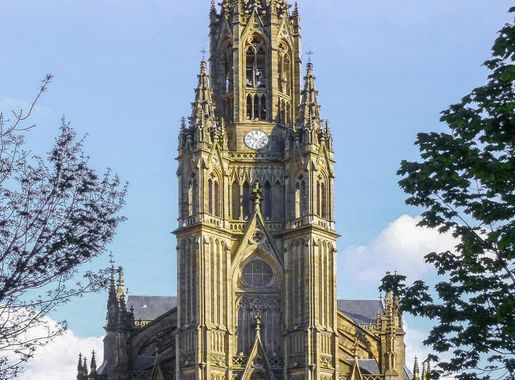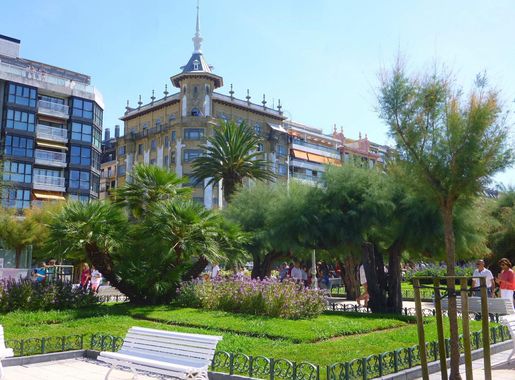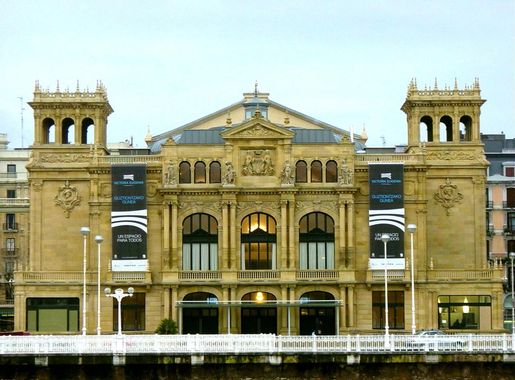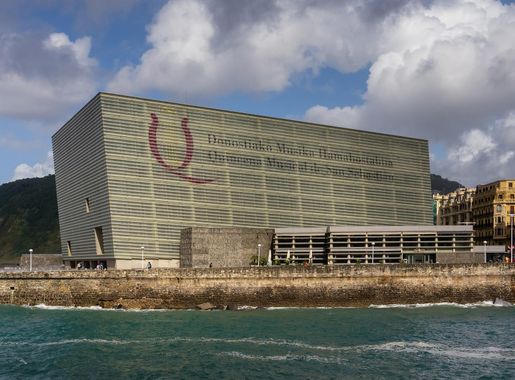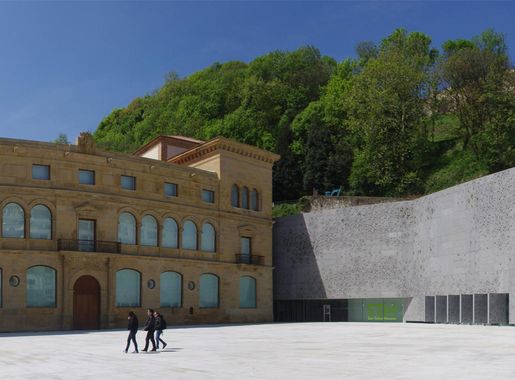
The Heartbeat of San Sebastián: Centro
Explore Centro in San Sebastián, the bustling heart of the city, where elegant architecture, gourmet dining, and vibrant street life converge.
Centro is the vibrant core of San Sebastián, where history and modernity blend seamlessly. Known for its elegant architecture and bustling streets, this neighbourhood offers a delightful mix of cultural experiences and leisure activities. As you stroll through its broad avenues, you will be enchanted by the grandeur of Belle Époque buildings, each narrating tales of the city’s illustrious past. Centro is also a shopper's paradise, with a variety of boutiques, high-end stores, and charming local shops. The area is dotted with numerous cafes and restaurants, perfect for indulging in Basque culinary delights. Don't miss the opportunity to try pintxos, a local specialty, in one of the many bars around here. The neighbourhood’s central location makes it an ideal base for exploring San Sebastián. You’re just a short walk away from the picturesque La Concha Beach, where you can soak up the sun or take a leisurely promenade along the bay. The area also houses several important cultural institutions, including the San Telmo Museum and the Victoria Eugenia Theatre, providing a rich cultural itinerary for visitors.
Local tips in Centro
- Visit the Mercado de San Martín for fresh local produce and a taste of everyday life in San Sebastián.
- Wear comfortable shoes as the best way to explore Centro is on foot, allowing you to discover hidden gems around every corner.
- Check the local calendar for festivals or events at the Victoria Eugenia Theatre for a memorable cultural experience.
- Early mornings are the best time to visit La Concha Beach to avoid crowds and enjoy a peaceful start to your day.
The Heartbeat of San Sebastián: Centro
Centro is the vibrant core of San Sebastián, where history and modernity blend seamlessly. Known for its elegant architecture and bustling streets, this neighbourhood offers a delightful mix of cultural experiences and leisure activities. As you stroll through its broad avenues, you will be enchanted by the grandeur of Belle Époque buildings, each narrating tales of the city’s illustrious past. Centro is also a shopper's paradise, with a variety of boutiques, high-end stores, and charming local shops. The area is dotted with numerous cafes and restaurants, perfect for indulging in Basque culinary delights. Don't miss the opportunity to try pintxos, a local specialty, in one of the many bars around here. The neighbourhood’s central location makes it an ideal base for exploring San Sebastián. You’re just a short walk away from the picturesque La Concha Beach, where you can soak up the sun or take a leisurely promenade along the bay. The area also houses several important cultural institutions, including the San Telmo Museum and the Victoria Eugenia Theatre, providing a rich cultural itinerary for visitors.
Iconic landmarks you can’t miss
Miramar Jauregia
Discover the elegance and beauty of Miramar Jauregia, a historical palace and park offering stunning views of Donostia-San Sebastián's coastline.
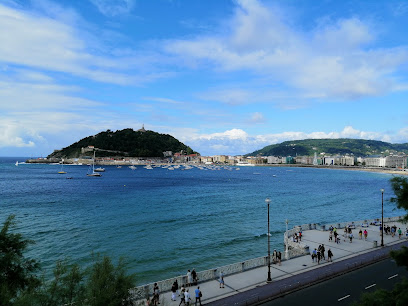
Good Shepherd of San Sebastián Cathedral
Discover the enchanting Good Shepherd Cathedral in San Sebastián, a neo-Gothic architectural marvel that embodies the city's rich culture and history.

San Telmo Museum
Explore the heart of Basque culture and history at San Telmo Museum, where art and tradition come alive in San Sebastián.
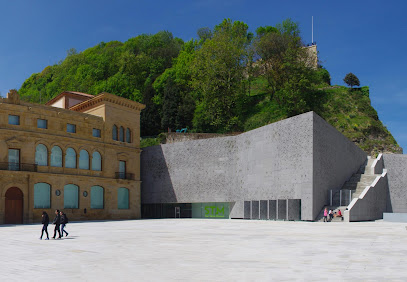
Kontxa Pasealekua
Discover the scenic beauty and rich heritage of Kontxa Pasealekua, a historic promenade in Donostia-San Sebastián, perfect for leisurely strolls and stunning views.
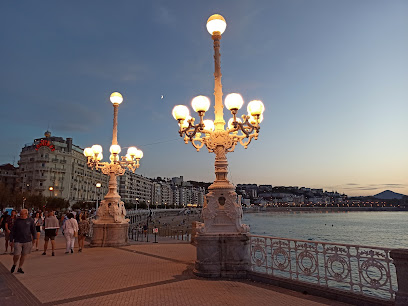
Motako Gaztelua
Explore Motako Gaztelua, a historic castle offering stunning views and a rich tapestry of culture in Donostia-San Sebastián.
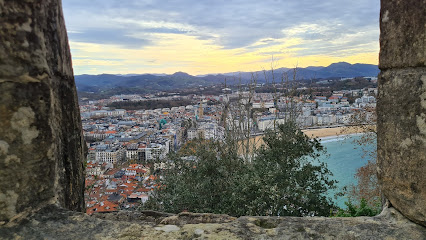
Koruko Andre Mariaren basilika
Explore the captivating Koruko Andre Mariaren Basilika, a masterpiece of Baroque architecture and spiritual significance in the heart of Donostia-San Sebastian.
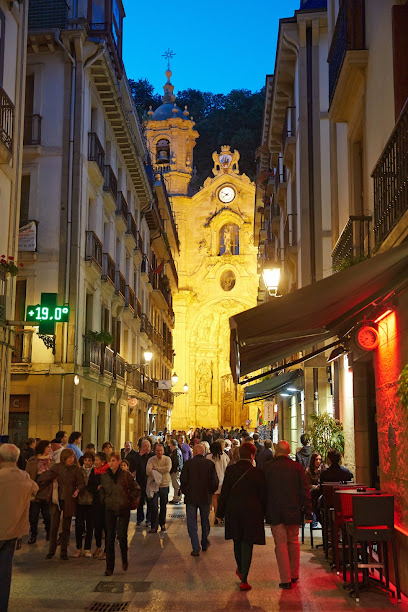
Plaza de la Constitucion
Discover the historical charm of Plaza de la Constitucion, a lively square in Donostia-San Sebastian, where culture and community come together.
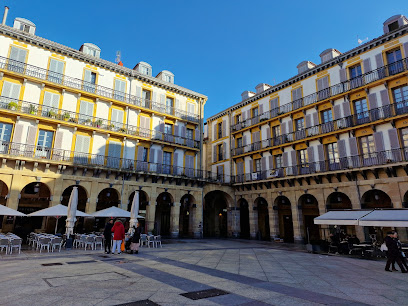
Baluarte del Mirador
Discover the breathtaking views and rich history at Baluarte del Mirador, an iconic observation deck on Monte Urgull in San Sebastián.
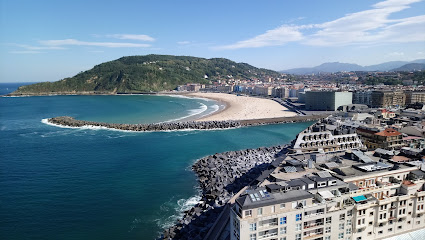
Monte Urgull
Discover the breathtaking views and rich history at Monte Urgull, San Sebastián's iconic observation deck and tourist attraction.
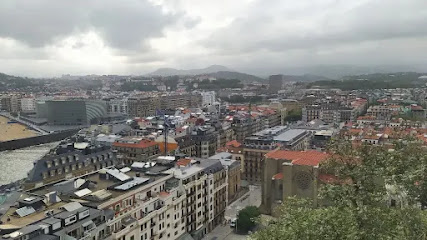
Iturri apaingarria
Explore the enchanting Iturri Apaingarria in Donostia-San Sebastian, a stunning ornamental fountain surrounded by lush landscapes and tranquil pathways.
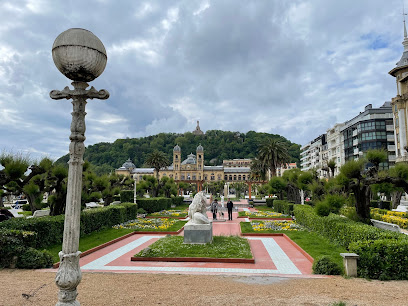
Unmissable attractions to see
Parque de Atracciones Monte Igueldo
Discover the thrills and breathtaking views at Parque de Atracciones Monte Igueldo, a must-visit amusement park in Donostia-San Sebastian.

Eureka! Zientzia Museoa
Explore the wonders of science and technology at Eureka! Zientzia Museoa, an interactive museum ideal for families and curious minds in Donostia-San Sebastian.
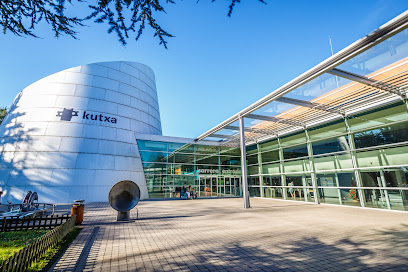
Monte Urgull
Experience the stunning views and rich history at Monte Urgull, a must-visit observation deck in San Sebastián.
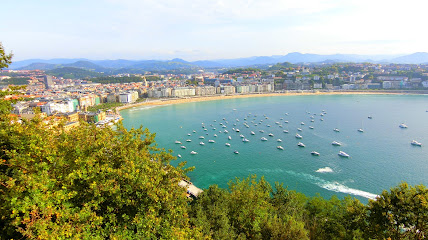
Loretopea
Discover the breathtaking views and serene beauty of Loretopea, a scenic spot in Donostia-San Sebastián, ideal for relaxation and exploration.
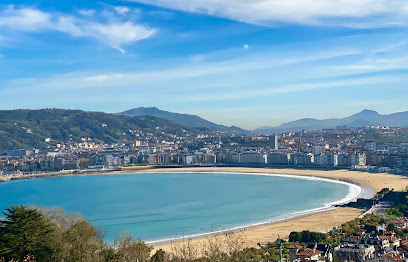
Tren turístico
Discover the beauty of Donostia-San Sebastián with Tren Turístico, a scenic train ride showcasing the city's stunning landscapes and rich heritage.
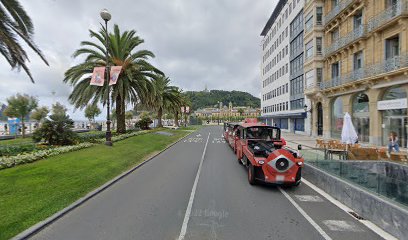
Essential places to dine
Casa Urola
Discover authentic Basque cuisine at Casa Urola in Donostia-San Sebastián, where tradition meets flavor in every exquisite dish.
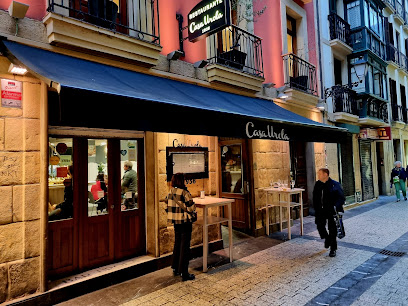
Zazpi
Experience exquisite Basque cuisine at Zazpi in Donostia-San Sebastian, where tradition meets modern fine dining.
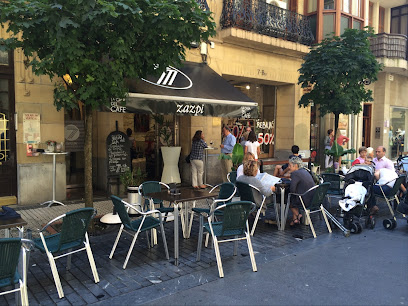
La Tagliatella
Experience authentic Italian cuisine at La Tagliatella in San Sebastián; where every dish celebrates tradition and flavor.
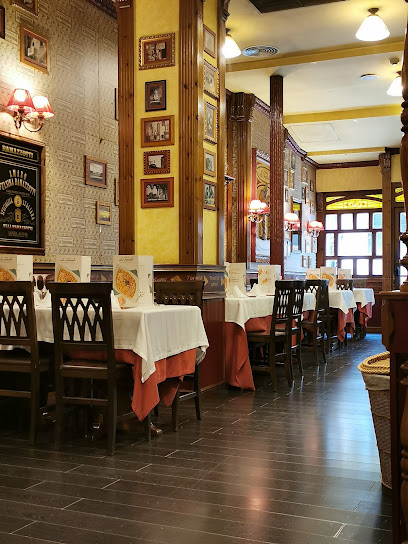
Sirimiri Gastroleku
Experience innovative Basque cuisine at Sirimiri Gastroleku in Donostia-San Sebastian—where tradition meets modern culinary artistry.
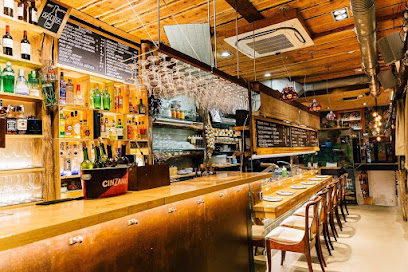
Bodegon Alejandro
Experience the authentic flavors of Basque cuisine at Bodegon Alejandro in Donostia-San Sebastian – where every dish tells a story.

La Madame
Discover La Madame: A chic modern European restaurant offering exquisite cuisine by day and vibrant nightlife by night in San Sebastian.
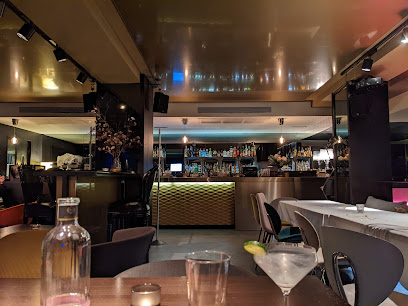
Alderdi Zahar
Discover Alderdi Zahar in Donostia-San Sebastian for an unforgettable taste of authentic Basque cuisine amidst charming surroundings.
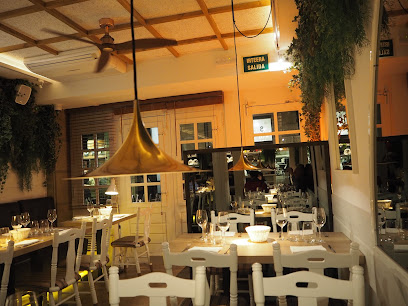
Kokotxa Jatetxea
Experience Basque culinary artistry at Kokotxa Jatetxea in San Sebastián—where tradition meets innovation in fine dining.
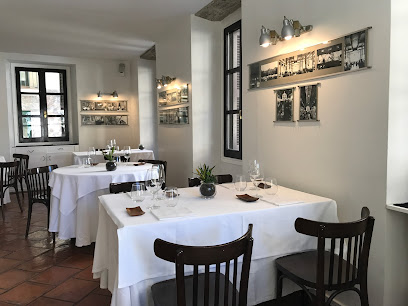
Anastasio
Discover the essence of Basque cuisine at Anastasio, where tradition meets flavor in every dish.
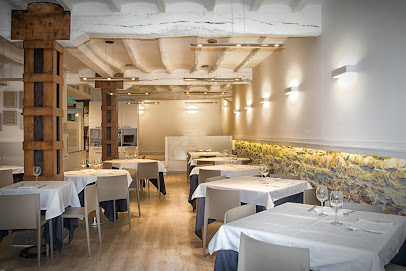
Zirtan jatetxea
Experience authentic Basque flavors at Zirtan Jatetxea in Donostia-San Sebastian—where tradition meets innovation in every dish.
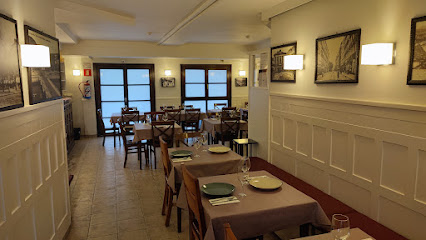
Markets, malls and hidden boutiques
Garbera Merkataritza Gunea
Explore Garbera Shopping Mall – a vibrant shopping and entertainment hub in Donostia-San Sebastian, perfect for families and travelers alike.
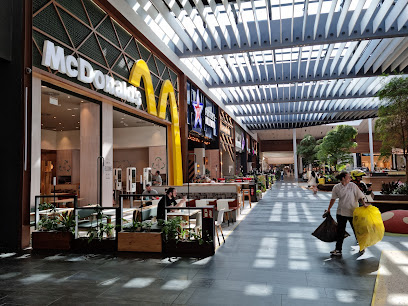
Bretxa Merkataritza Zentroa
Experience the ultimate shopping and dining adventure at Bretxa Merkataritza Zentroa in San Sebastián, where local charm meets modern retail.
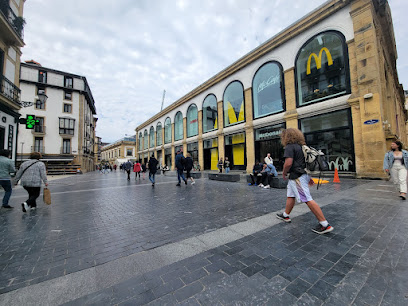
Brownie - San Sebastián
Explore the trendy world of Brownie in San Sebastián, where chic women's fashion meets exceptional service in a vibrant shopping atmosphere.
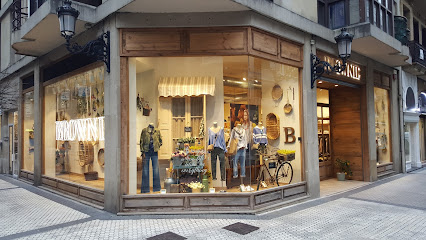
MANILA SAN SEBASTIÁN
Discover elegance and style at Manila San Sebastián - your go-to boutique for exquisite formal wear in Donostia-San Sebastián.
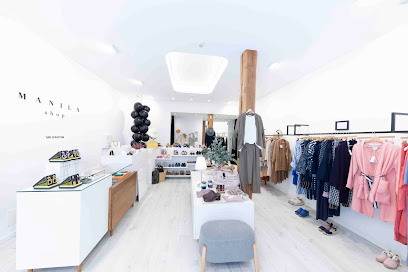
San Sebastian Duck Store
Discover unique souvenirs and delightful gifts at San Sebastian Duck Store, a charming gem in the heart of Donostia-San Sebastian.
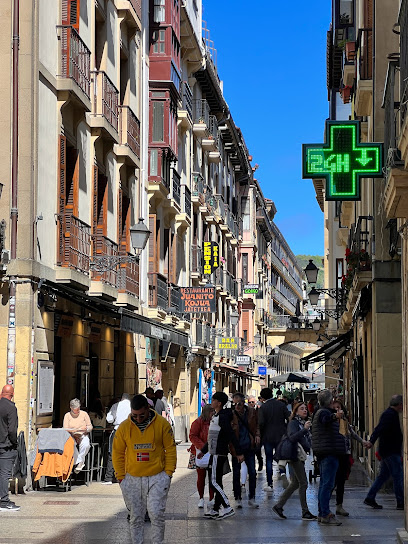
Koloreka
Discover unique handcrafted gifts and local art at Koloreka, a delightful gift shop and gallery in Donostia-San Sebastian.
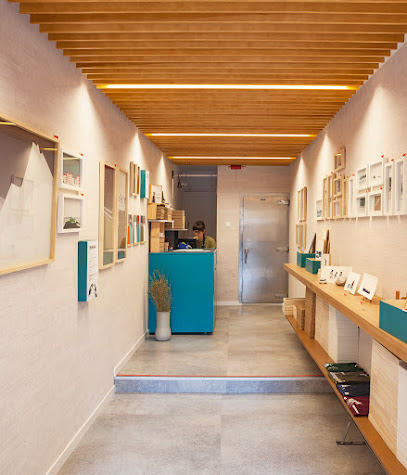
ba&sh
Explore the fashionable world of ba&sh, a women's clothing store in Donostia-San Sebastian, offering chic styles and unique accessories.
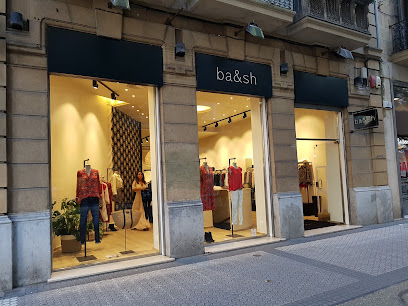
PYC
Explore PYC Gift Shop in Donostia-San Sebastian for unique vintage finds and authentic local gifts that capture the essence of the Basque culture.
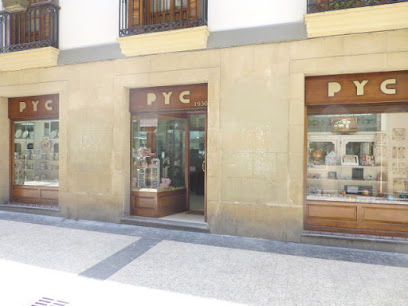
SAOMI
Discover the essence of Basque culture at SAOMI, the premier gift shop in Donostia-San Sebastian, offering unique souvenirs and local treasures.

Boutique Open's Donostia
Explore Boutique Open's Donostia for exquisite women's fashion and unique accessories in the heart of San Sebastian.
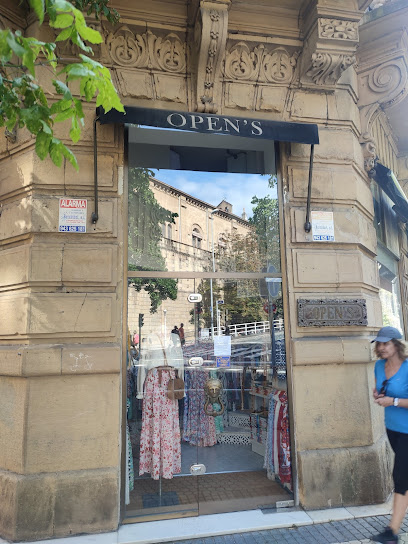
Essential bars & hidden hideouts
Atari Gastroleku
Discover the vibrant flavors of Basque cuisine at Atari Gastroleku, a top-notch tapas bar in Donostia-San Sebastian, perfect for culinary explorers.
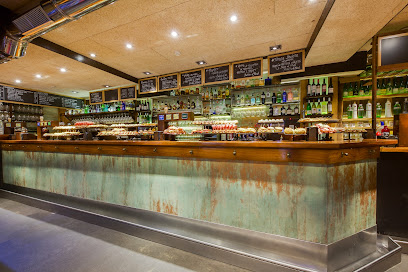
Bar Antonio
Discover Bar Antonio: A Culinary Gem in Donostia-San Sebastian Offering Delightful Tapas and Local Beverages.
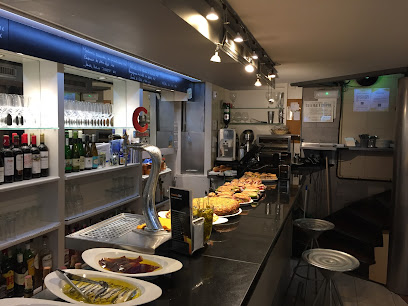
Museo Del Whisky - Donostia-San Sebastian, Gipuzkoa
Experience the rich history and delightful flavors of whisky at Museo Del Whisky, a unique cocktail bar and museum in Donostia-San Sebastian.
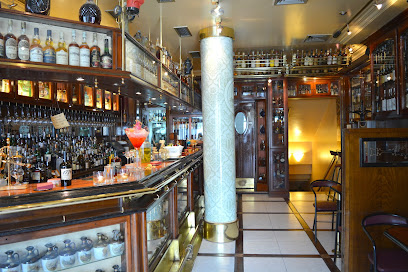
Geralds Bar
Discover the unforgettable flavors of Geralds Bar in Donostia-San Sebastian, where vibrant dishes meet an inviting atmosphere.
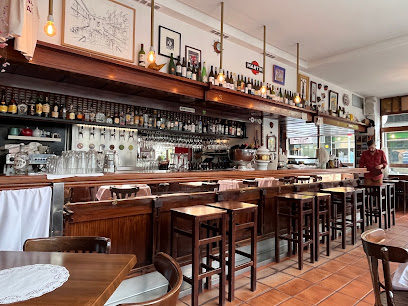
The Hole Pub
Experience the lively atmosphere and local flavors at The Hole Pub, a dart bar that brings together fun, drinks, and great company in Donostia-San Sebastián.
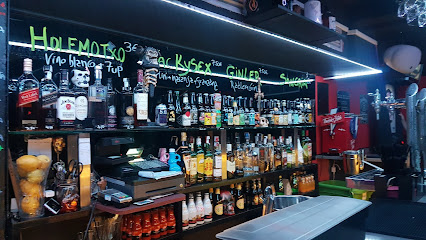
Txurrut Terraza Puba
Discover the lively atmosphere and local flavors at Txurrut Terraza Puba, a charming pub in the heart of Donostia-San Sebastian.
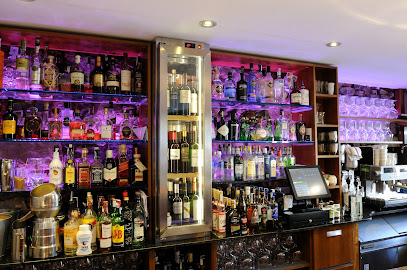
Arraun
Experience the vibrant cocktail culture of Donostia-San Sebastián at Arraun, a cozy bar renowned for its creative drinks and welcoming atmosphere.
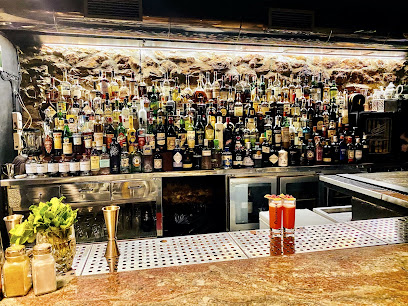
Cafe Bar Sebastopol
Discover the flavors of Basque Country at Cafe Bar Sebastopol, a cozy bar in Donostia-San Sebastian offering exquisite pintxos and a vibrant atmosphere.
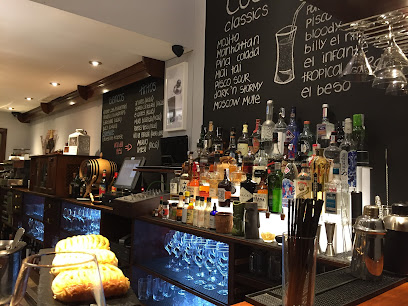
Bar Bixigarri
Discover the essence of Basque cuisine at Bar Bixigarri in Donostia-San Sebastián, where delightful tapas and a lively atmosphere await.
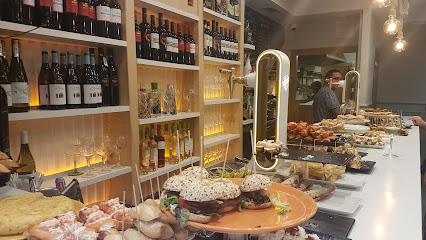
The Blind Pig
Discover The Blind Pig, a hidden cocktail bar in Donostia-San Sebastián, renowned for its innovative drinks and inviting atmosphere.
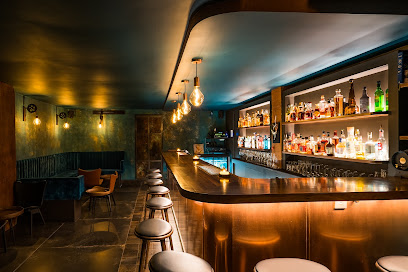
Local Phrases
-
- HelloHola
[oh-lah] - GoodbyeAdiós
[ah-dee-ohs] - YesSí
[see] - NoNo
[noh] - Please/You're welcomePor favor/De nada
[por fah-vor/deh nah-dah] - Thank youGracias
[grah-see-ahs] - Excuse me/SorryPerdón/Lo siento
[pair-dohn/loh see-ehn-toh] - How are you?¿Cómo estás?
[koh-moh ehs-tahs] - Fine. And you?Bien. ¿Y tú?
[byen. ee too] - Do you speak English?¿Hablas inglés?
[ah-blahs een-glays] - I don't understandNo entiendo
[noh ehn-tee-ehn-doh]
- HelloHola
-
- I'd like to see the menu, pleaseMe gustaría ver la carta, por favor
[meh goo-stah-ree-ah vehr lah kahr-tah, por fah-vor] - I don't eat meatNo como carne
[noh koh-moh kahr-neh] - Cheers!¡Salud!
[sah-lood] - I would like to pay, pleaseMe gustaría pagar, por favor
[meh goo-stah-ree-ah pah-gar, por fah-vor]
- I'd like to see the menu, pleaseMe gustaría ver la carta, por favor
-
- Help!¡Ayuda!
[ah-yoo-dah] - Go away!¡Vete!
[veh-teh] - Call the Police!¡Llama a la Policía!
[yah-mah ah lah poh-lee-see-ah] - Call a doctor!¡Llama a un médico!
[yah-mah ah oon meh-dee-koh] - I'm lostEstoy perdido
[ehs-toy pair-dee-doh] - I'm illEstoy enfermo
[ehs-toy ehn-fehr-moh]
- Help!¡Ayuda!
-
- I'd like to buy...Me gustaría comprar...
[meh goo-stah-ree-ah kohm-prahr] - I'm just lookingSolo estoy mirando
[soh-loh ehs-toy mee-rahn-doh] - How much is it?¿Cuánto cuesta?
[kwan-toh kwehs-tah] - That's too expensiveEs demasiado caro
[ehs de-mah-syah-doh kah-roh] - Can you lower the price?¿Puedes bajar el precio?
[pweh-dehs bah-har el preh-see-oh]
- I'd like to buy...Me gustaría comprar...
-
- What time is it?¿Qué hora es?
[keh oh-rah ehs] - It's one o'clockEs la una
[ehs lah oo-nah] - Half past (10)Y media (10)
[ee meh-dee-ah (dheez)] - MorningMañana
[mah-nyah-nah] - AfternoonTarde
[tahr-deh] - EveningNoche
[noh-cheh] - YesterdayAyer
[ah-yehr] - TodayHoy
[oy] - TomorrowMañana
[mah-nyah-nah] - 1Uno
[oo-noh] - 2Dos
[dohs] - 3Tres
[trehs] - 4Cuatro
[kwah-troh] - 5Cinco
[theen-koh] - 6Seis
[sehs] - 7Siete
[syeh-teh] - 8Ocho
[oh-choh] - 9Nueve
[nweh-veh] - 10Diez
[dyehth]
- What time is it?¿Qué hora es?
-
- Where's a/the...?¿Dónde está el/la...?
[dohn-deh ehs-tah ehl/lah] - What's the address?¿Cuál es la dirección?
[kwal ehs lah dee-rehk-see-ohn] - Can you show me (on the map)?¿Puedes mostrarme (en el mapa)?
[pweh-dehs mohs-trar-meh (ehn el mah-pah)] - When's the next (bus)?¿Cuándo es el próximo (autobús)?
[kwan-doh ehs ehl proh-ksee-moh (ow-toh-boos)] - A ticket (to ....)Un billete (a ...)
[oon bee-yeh-teh (ah ...)]
- Where's a/the...?¿Dónde está el/la...?
History of Centro
-
San Sebastián, or Donostia as it is known in Basque, was officially founded in 1180 by King Sancho VI of Navarre. The Centro neighbourhood became the heart of the city, strategically located near the Bay of La Concha. The early development of the area was marked by its role as a port for trade, connecting the Basque region to the rest of Europe.
-
The 19th century was a period of significant growth for San Sebastián, especially after it became a favorite summer retreat for the Spanish royal family. The Centro neighbourhood saw the construction of numerous grand buildings, such as the Victoria Eugenia Theatre (opened in 1912) and the San Sebastián City Hall (completed in 1887), which exemplified the city’s cultural flourishing during this time.
-
In 1936, during the Spanish Civil War, San Sebastián faced an aerial bombardment that left significant destruction in the Centro area. This event marked a dark chapter in the city's history, as many historical buildings were damaged or destroyed, prompting a period of reconstruction and revitalization in the years that followed.
-
Following World War II, San Sebastián underwent extensive urban development. The Centro neighbourhood was modernized, with a focus on improving infrastructure and public spaces. The city’s commitment to preserving its cultural identity while embracing modernity resulted in a blend of historical and contemporary architecture, evident in the Paseo de la Concha and surrounding areas.
-
In recent decades, San Sebastián has gained international recognition as a culinary capital, with the Centro neighbourhood at the forefront. The area is home to numerous Michelin-starred restaurants and traditional pintxos bars, celebrating Basque cuisine. Additionally, the annual San Sebastián International Film Festival, founded in 1953, further enhances the city’s cultural landscape, attracting filmmakers and audiences from around the globe.
Centro Essentials
-
Centro is easily accessible from other neighborhoods in San Sebastián. If you're arriving from the train station, it's just a 15-minute walk to the heart of Centro. You can also take a local bus; lines 13, 25, and 28 provide direct routes to Centro. For those coming from the beach areas like La Concha, it's a pleasant 20-minute walk along the promenade.
-
Centro is a pedestrian-friendly neighborhood, making it ideal for walking. Public buses service the area, with frequent stops. Bicycles can be rented from various spots, and there are bike lanes available. For longer distances, consider using taxis or rideshare apps, although many attractions are within walking distance.
-
Centro is generally safe for tourists, but as in any urban area, it's wise to remain vigilant. Petty crime, such as pickpocketing, can occur, particularly in crowded areas like markets or near popular tourist attractions. Avoid poorly lit streets at night and be cautious when approached by strangers asking for help.
-
In case of an emergency, dial 112 for police, fire, or medical assistance. The nearest hospital is the Hospital Donostia, located a short taxi ride away from Centro. It’s advisable to have a list of important emergency contacts, including your country's embassy. Pharmacies are available throughout Centro for minor health issues.
-
Fashion: Do dress comfortably for walking, especially in warmer months. Avoid overly casual attire in upscale restaurants. Religion: Do respect religious customs; when visiting churches, cover your shoulders and knees. Public Transport: Do validate your ticket before boarding. Don't engage in loud conversations. Greetings: Do greet with a friendly 'Hola.' A smile goes a long way. Eating & Drinking: Do try pintxos at local bars, and don't rush your meal; dining is a leisurely affair here.
-
To experience Centro like a local, visit the Mercado de la Bretxa for fresh produce and local delicacies. Take part in the late afternoon tradition of pintxos hopping; it's a great way to sample various dishes. Get comfortable with the local culture by practicing your Spanish; locals appreciate the effort. Lastly, don’t miss the chance to enjoy a leisurely stroll through the Parque de Alderdi Eder, especially at sunset.
Nearby Cities to Centro
-
Things To Do in Pamplona
-
Things To Do in Bilbao
-
Things To Do in Santander
-
Things To Do in Lourdes
-
Things To Do in Burgos
-
Things To Do in Huesca
-
Things To Do in Bordeaux
-
Things To Do in Zaragoza
-
Things To Do in Toulouse
-
Things To Do in Lleida
-
Things To Do in Valladolid
-
Things To Do in Arinsal
-
Things To Do in El Serrat
-
Things To Do in La Massana
-
Things To Do in Ordino


